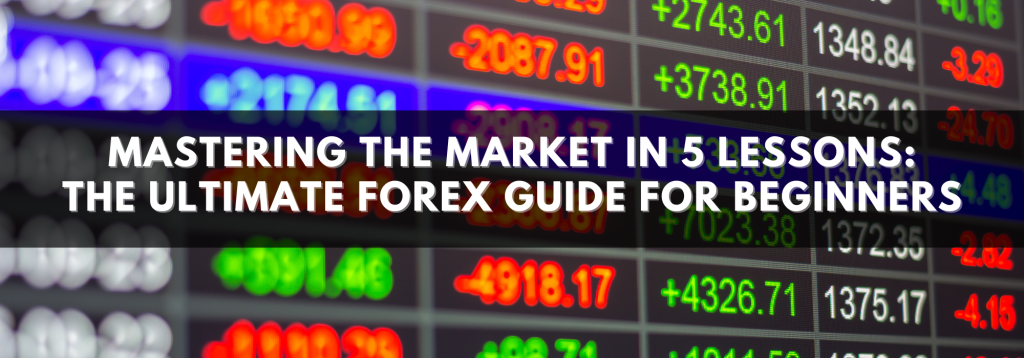Table of Contents

Navigating the World’s Largest Financial Market
Foreign exchange, or Forex, represents the bustling intersection of global finance where traders engage in the buying and selling of currencies. This dynamic market, notable for its accessibility to both beginners and experts, operates around the clock, fueling its appeal across diverse trading communities.
The Essence of the Forex Market
At the heart of the Forex market lies its distinction as the most liquid financial market globally. In 2022, this marketplace achieved a milestone with daily trading volumes soaring to an unprecedented $7.5 trillion. This staggering figure highlights not only the market’s vast magnitude but also the relative ease with which substantial monetary transactions can be executed at almost any time during operational hours.
Forex trading spans 24 hours a day, from Monday through Friday, seamlessly adapting to various international time zones. The trading day commences with the Australian market, then progresses through the Asian session, headquartered in Tokyo – the world’s third-largest trading hub. As the day unfolds, the European and US markets come into play, offering continuous trading opportunities until the weekend break. This uninterrupted cycle of operation enables traders from every corner of the globe to partake in Forex trading, accommodating their unique geographic and temporal contexts.
Understanding Forex Trading Terms
To adeptly navigate the Forex market, understanding its unique terminology is crucial. This knowledge forms the bedrock upon which successful trading strategies are built. The guide delves into essential Forex trading terms, offering clarity and insights for traders at all levels. From deciphering currency pair classifications to grasping the nuances of market analysis, this section aims to equip traders with the foundational language of Forex trading.
For a more detailed exploration of Forex trading terms and to enhance your understanding of this complex and fascinating market, I recommend consulting comprehensive resources or expert analyses available in financial literature and online trading platforms.
Lesson 1: Types of Currencies
Understanding the distinctions between major, minor, and exotic currency pairs is more than an academic exercise. Each category comes with its own set of characteristics in terms of liquidity, volatility, and spread sizes, which can significantly impact your trading strategy. For instance, while majors offer more stability and lower spreads, exotics can present unique opportunities albeit with higher risks.
- Major Currency Pairs: These pairs always include the US dollar as either the base or quote currency and are the most widely traded, offering high liquidity, low spreads, and lower broker commissions. The seven major forex currency pairs are:
- EUR/USD (Euro/US Dollar)
- USD/CHF (US Dollar/Swiss Franc)
- AUD/USD (Australian Dollar/US Dollar)
- GBP/USD (British Pound/US Dollar)
- NZD/USD (New Zealand Dollar/US Dollar)
- USD/JPY (US Dollar/Japanese Yen)
- USDCAD (US Dollar/Canadian Dollar)
- Minor Currency Pairs: Also known as cross currency pairs, these do not include the US dollar. They offer good trading opportunities but are less liquid compared to major pairs. There are 21 minor currency pairs, including:
- EUR/GBP (Euro/British Pound)
- EUR/CAD (Euro/Canadian Dollar)
- EUR/AUD (Euro/Australian Dollar)
- EUR/NZD (Euro/New Zealand Dollar)
- EUR/CHF (Euro/Swiss Franc)
- EUR/JPY (Euro/Japanese Yen)
- GBP/JPY (British Pound/Japanese Yen)
- AUD/JPY (Australian Dollar/Japanese Yen)
- Other pairs include combinations of GBP, JPY, AUD, NZD, CAD, CHF.
- Exotic Currency Pairs: These involve one major currency and the currency of a developing country (such as Turkey, Singapore, Mexico). Trading exotic pairs can be challenging due to large spreads, high commission rates, and lower liquidity. Examples include:
- USD/HKD (US Dollar/Hong Kong Dollar)
- USDSGD (US Dollar/Singapore Dollar)
- USDMXN (US Dollar/Mexican Peso)
- USDTRY (US Dollar/Turkish Lira)
- USDNOK (US Dollar/Norwegian Krone)
- USDZAR (US Dollar/South African Rand)
Learn More: Major Currency Pairs and The Rise of Digital Currencies
Lesson 2: Trading Mechanics
The mechanics of Forex trading, such as leverage and margin, are double-edged swords. While leverage can dramatically amplify profits, it also increases the potential for substantial losses. It’s essential to approach these tools with a strategy and a clear understanding of their risks. Margin, while enabling traders to open larger positions, also requires careful management to avoid margin calls.
- Pips: A pip is the smallest price movement in a currency pair’s exchange rate, used to measure changes in the rate. It’s a standard unit in Forex trading for expressing the change in value between two currencies.
- Lots: A lot is a standardized unit of currency used to quantify the amount being traded in the Forex market. Standard lots are typically 100,000 units of the base currency, but there are also mini (10,000 units), micro (1,000 units), and nano (100 units) lot sizes.
- Leverage: Leverage in Forex enables traders to control a larger position with a smaller amount of actual capital. It’s a tool that can magnify both potential profits and potential losses.
- Margin: Margin is the required capital that must be deposited with a broker to open and maintain a leveraged trade. It acts as collateral for the position and varies depending on the size of the trade and the leverage used.
- Spread: The spread in Forex trading is the difference between a currency pair’s bid (sell) and ask (buy) prices. It represents the broker’s charge for executing a trade and affects the cost and potential profitability of trading activities.
Each term plays a critical role in the mechanics of Forex trading, affecting strategies, risk management, and overall trading experience. Understanding these concepts is fundamental for anyone looking to engage in Forex trading effectively.
Lesson 3: Market Mechanics
The bid and ask prices are more than just numbers; they represent the pulse of the market. Small variations in these prices can significantly impact the profitability of your trades. For example, a wider spread in an exotic pair might mean higher costs for each trade, affecting your overall trading outcome.
- Bid and Ask: The ‘bid’ is the highest price a buyer is willing to pay for a currency pair, while the ‘ask’ is the lowest price at which a seller is willing to sell. The difference between these two prices is the spread. The bid-ask mechanism is crucial for understanding how Forex prices are quoted and executed.
- Order Types: These are instructions to brokers on how to enter or exit the market. Common types include:
Market Orders: Execute a trade immediately at the current market price.
Limit Orders: Set to buy or sell a currency pair at a specified price or better.
Stop Orders: Trigger a buy or sell order when the market reaches a certain price. - Currency Rate: This is the rate at which one currency can be exchanged for another. It fluctuates based on economic factors, market demand, and global events.
Lesson 4: Trade Management
Successful Forex trading is not just about making profitable trades but also about consistent risk management. Strategies such as setting stop-loss orders and managing position sizes are vital in protecting your capital from significant losses, especially in a market as volatile as Forex.
- Stop-Loss and Take-Profit Orders: These are crucial for risk management. A stop-loss order automatically closes a trade at a predetermined price to limit potential losses, while a take-profit order does the same when a certain level of profit is reached.
- Equity: Refers to the value of a trading account if all positions were closed. It’s the sum of the account balance and any unrealized profit or loss from open positions.
- Risk Management: This involves strategies to minimize potential trading losses. It includes setting stop-loss orders, managing position sizes, and understanding leverage risks.
Lesson 5: Analysis Techniques
Many seasoned traders combine fundamental and technical analysis in their trading approach. While fundamental analysis helps in understanding the macroeconomic factors affecting currency values, technical analysis can provide insights into market trends and potential entry and exit points.
- Fundamental Analysis: This involves studying economic indicators, government policies, societal factors, and other elements that might affect currency values. Traders use this information to predict future market movements.
- Technical Analysis: This relies on historical price data and statistical trends. Traders use charts, indicators (like moving averages, RSI, MACD), and patterns to predict future market movements.
Lesson 6: Market Conditions
Volatility in the Forex market can be a friend or a foe, depending on your trading style. Day traders and scalpers might find high volatility periods lucrative for quick gains, whereas long-term traders might prefer more stable market conditions to align with their strategies.
- Volatility: Refers to the frequency and extent of the price change in a currency pair. High volatility means significant price changes over a short period, offering both high risk and potential reward.
- Swap/Rollover: This is the interest paid or earned for holding a position overnight. It’s determined by the difference in interest rates between the two currencies in a pair.
Conclusion
As we wrap up this comprehensive exploration of the Forex market, remember that the journey into Forex trading is one of continuous learning and adaptation. The concepts we’ve delved into — from the basic understanding of currency pairs to the more intricate mechanics of trading — form the foundation of what is required to navigate this dynamic market successfully.
Forex trading offers a unique blend of challenges and opportunities. It demands not only a good grasp of the market’s fundamentals but also a disciplined approach to risk management and strategy development. As you embark on or continue your Forex trading journey, keep in mind that experience is a valuable teacher. Practice, patience, and perseverance are key.
For those eager to further their Forex education, countless resources are available. From online courses and trading simulators to community forums and expert analysis, the opportunities for learning and growth are endless. Remember, every successful trader was once a beginner, and the commitment to learning and adapting is what separates the successful from the rest.
Want to Elevate Your Trading Game? Experience Unparalleled Speed with Fast Forex VPS!
Subscribe Today!
